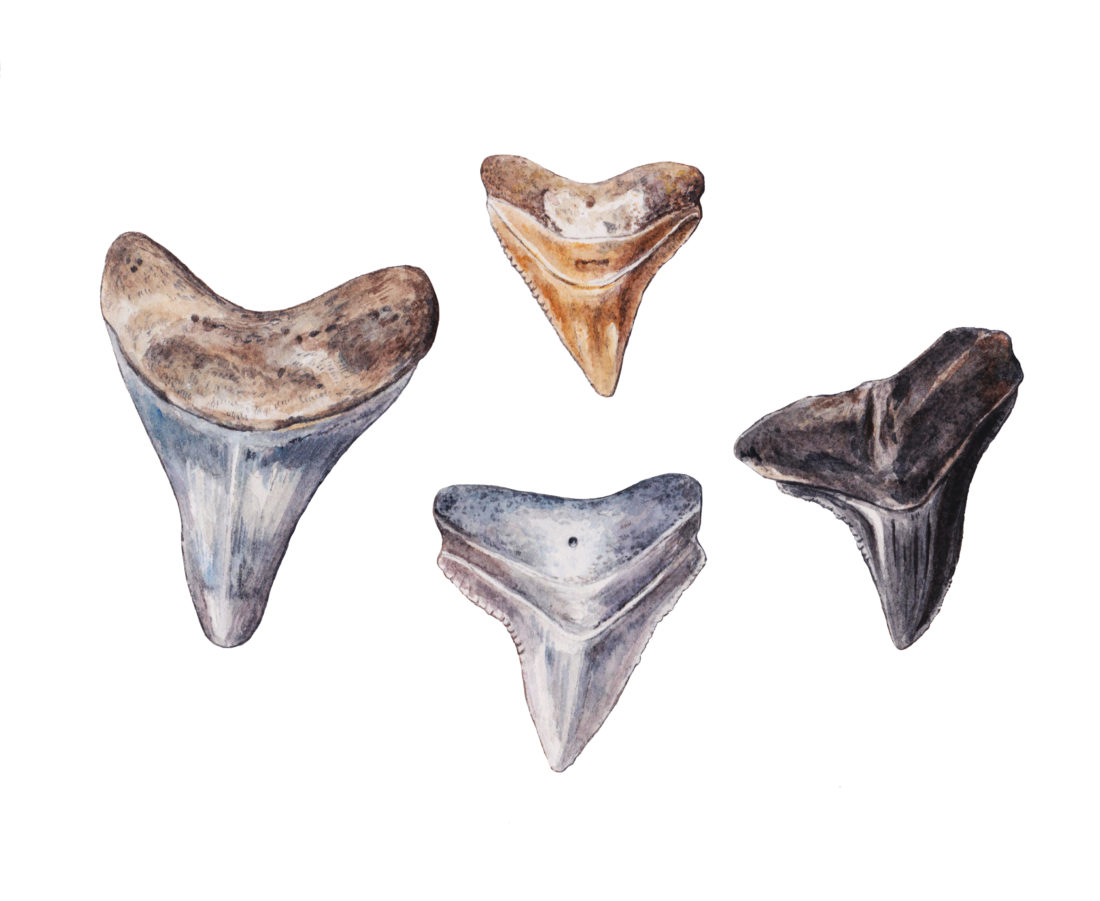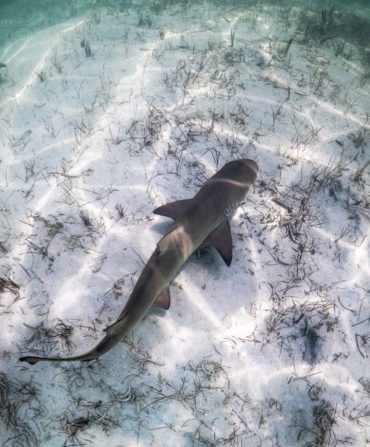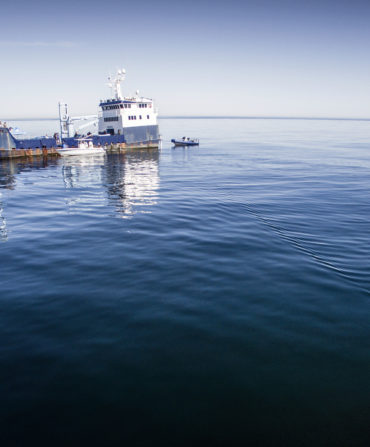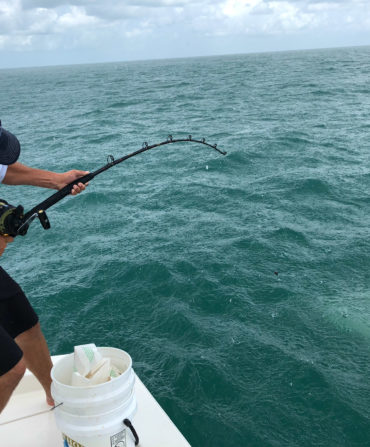Shark teeth have always been highly sought-after beach finds. And while modern collectors comb the shores for them for fun, shark teeth were of real use centuries ago. Coastal Native Americans—in Florida and the Chesapeake, particularly—used them as weapons. “Sometimes they’d find huge megalodon teeth and hone them down into spear points,” says Anna Marlis Burgard, author of The Beachcomber’s Companion: An Illustrated Guide to Collecting and Identifying Beach Treasures.
Throughout her life and work, Burgard, a Tybee Island, Georgia, resident, has traversed countless beaches in search of treasures. And while her collection is full of all types of beach finds—her favorites are baby’s ears shells—she’s learned a thing or two about the best ways and places to find shark teeth.
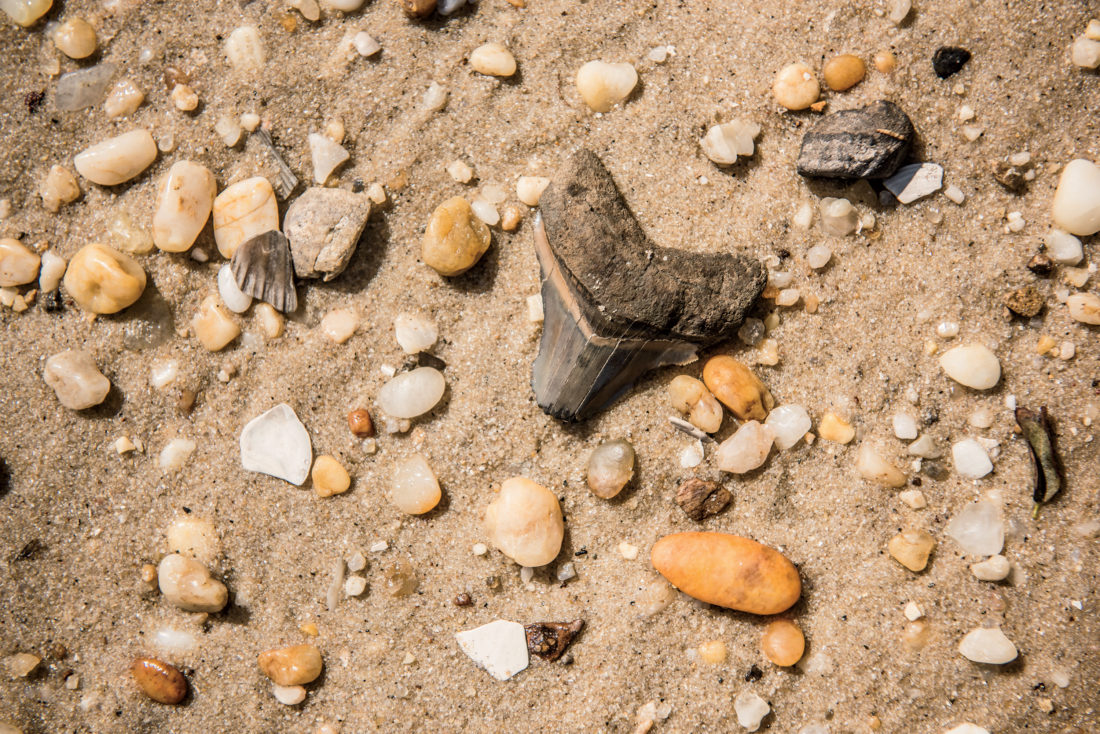
Photo: Mike Morgan
A shark tooth on a beach in Calvert County, Maryland.
How to identify them:
Along the tideline of a beach, keep an eye out for triangular shapes. While newer teeth are still white, black teeth—which are more common finds—have been fossilized over time. Wide bases are attached to thinner triangles of varying sharpness. “Sometimes, shark teeth will have serrated edges and are curved in a certain way, depending on what side of the mouth the tooth was on,” Burgard says. For serious hunters, a naked eye and salt-water pruned fingers are not enough; chances of finding shark teeth increase the more you dig and sift through the sand. “Some people use ordinary kitchen sieves or kitty-litter scoops, but these have too fine a mesh, too wide slats,” Burgard says. “This company makes sifters specifically for finding shark’s teeth.”
Where to find them:
Anywhere there are sharks, there are shark teeth, but some beaches are especially prime. Burgard says that in her experience, the best beaches for finding shark teeth are: Casey Key, Florida; Cherry Grove Beach, South Carolina; Manasota Key, Florida; Mickler’s Landing at Ponte Vedra Beach Florida; Topsail Beach, North Carolina; Tybee Island, Georgia; and Venice Beach, Florida, which claims to the title of “Shark Tooth Capital of the World,” due to its position above a deep fossil layer.
When to find them:
“Whenever there’s beach replenishment, or the ocean floor gets dredged, more shells and shark teeth are sure to show up,” Burgard says. This could be manmade or after a storm. Low tide is usually better and places like sandbars, where water constantly shifts the sand, tend to be hot spots.
Where to find more people who love them:
“There’s a very devoted fan base,” Burgard says. With a yearly Shark Tooth Festival in Venice Beach and dozens of Facebook pages where enthusiasts trade tips and tricks, like this one focusing on fossils found in North Carolina, this one dedicated entirely to megalodon teeth, and this one where people can trade and sell teeth from around the world, you don’t have to look far to find fellow tooth hunters.
See more from Garden & Gun’s shark coverage


